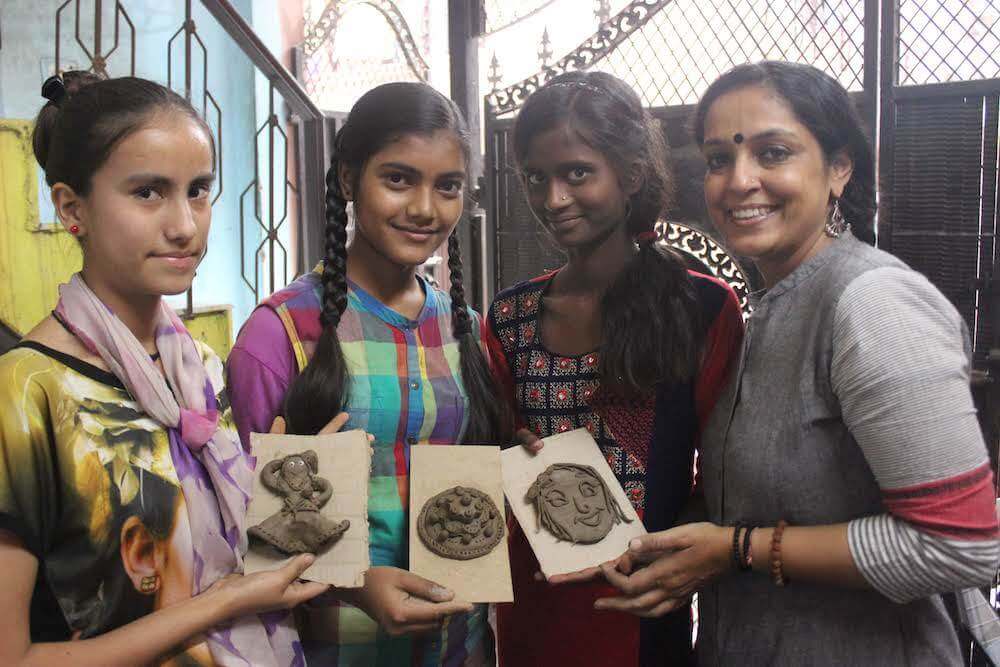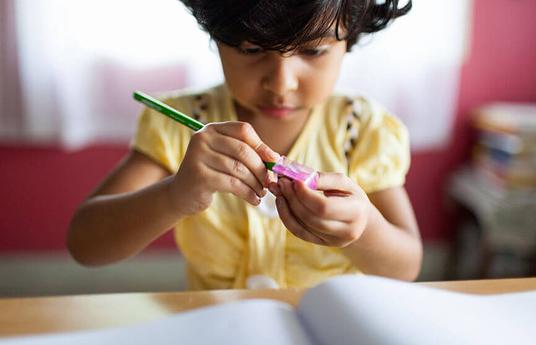Early this year, while we at Protsahan India Foundation were in the process of analyzing the body of work we had done over the past decade and preparing ourselves for the next decade, we received an email. It asked us to share the details of our work with the world on the HundrED.org platform. First, we were pleasantly surprised that information about what we were doing in some of the remotest nooks of India had somehow reached Helsinki, Finland! Secondly, we were hopeful that this recognition would give us doorways to reach more adolescent girls through the power of art, play, and technology at the bottom of the pyramid, here in India.
Since 2010, Protsahan has rescued more than 800 adolescent girls and has worked with over 68,000 girls from some of the most underserved communities in India on critical issues of education, healthcare, and justice. At the core of our work is a team of highly dedicated and experienced grassroots social workers and teachers who work tirelessly at the forefront of education innovation for the children at the last mile. The HEART principle forms the core of our work - H.E.A.R.T is an acronym that Protsahan defines as - Holistic Healing, Education, Art & Life Skills, Recovery from Trauma and Technology.
Bringing the Concept of Holistic Healing through Education
For decades, the education system has remained largely stagnant, emphasizing on rote learning to score well in examinations. Quality learning for growth, self-efficacy and the pursuit of knowledge through creativity is not a priority, especially more so for young adolescent girls at the last mile - those who do not have easy access to formal education, healthcare, or justice. Such children and their parents consider education as an opportunity that cost on their daily livelihood, as most of them are dependent on meager daily wages.
In the slum communities where Protsahan works, nearly 83% of girls do not have access to quality education, healthcare, and justice. Forced early marriages are rampant because the parents believe that they will have to spend less on the education and dowry of the girls if they are married young. These social factors lead to a very explosive situation with a high rate of abusive behavior towards girls, with as many as 89% reports experiencing sexual violence before the age of 12. In a survey done by the government, 48.3% of girls ‘wished they were boys.’ Let that sink in.
When the situation is this drastic, mere theoretical rhetoric and no action wouldn’t yield the intended impact. What is needed is a trauma-informed approach in the classrooms that are survivor-centric, especially when working with children from extremely difficult backgrounds. The five primary principles of a trauma-informed, compassionate care model involve providing the following basic tenets in the classroom as a non-negotiable:
- Safety
- Transparency and Trustworthiness
- Empathy and Peer Support
- Collaboration through Humility & Responsiveness
- Empowerment by Voice & Choice
Understanding the Intersectionality of Education, Healthcare and Justice
While quality education is certainly the bedrock of progress, it cannot be achieved in isolation. When a child who is hungry because she’s a girl and her mother believes that she needs to learn to survive on less so that more can be made available to her brother, it is difficult to explain calculus or creativity or any life skills to her in the classroom. When an adolescent girl is experiencing period cramps because her mother refuses to allow her to take medication to alleviate the pain, because she strongly believes that a girl should get accustomed to pain for later when her husband beats her, it is difficult to explain the concepts of English grammar to her. It is nearly impossible to engage her in the classroom if she is facing an abusive situation at home, and does not know how to raise her voice against that abuse.
These factors are real at the grassroots and require careful understanding and empathy to ensure that education has the intended impact on the lives of girls who are at risk of being left behind for the lack of any of the above. It requires involving the community to affect a change in the collective mindset that impedes the progress of young girls, reducing them to a constant state of dependence on the male members of the family for everything.
Research clearly establishes that girls and women are the engines that run society. So what can be done to cover the gap for adolescent girls, especially those living in underserved communities? The answer to this perhaps lies in innovations that engages and encourages girls, their parents and the communities together through an intersectional lens to invest in the pursuit of education, healthcare, and justice through the creative means of art and technology and not traditional rote learning methods that only teach one how to become a better rat in this massive rat race.

Learning & Sharing at the World Capital of Education Innovation - Helsinki
Traveling to Helsinki and getting an opportunity to witness first hand the innovation in public education was an experience that humbles us. We not only witnessed the impact of art and technology on students in the public education system in action but also realized the close resemblance to our own program. We learned the possibilities of scaling up the impact of our work in more ways than our team had envisioned. All this was made possible with the free exchange of ideas at the backdrop of the HundrED Innovation Summit where some of the best minds in global education assembled for the week-long celebration of education innovations. We learned from each other’s successes and failures, encouraged and cheered for each other, made fascinating connections and came back with more hope to strengthen our work in India.

Inspiring speakers spurred us to look beyond our geographical boundaries and inculcate a spirit of exploration. We found many of our own tribe - working hard to create a world of opportunities for young children through education innovation.
There were those who echoed our sentiments like Dana Winters from Fred Rogers Center in Pittsburgh. There were those who encouraged us to push the boundaries of our vision, like Sarah Bouchie from The Lego Foundation, and Miki Kuusi from Wolt and the likes of Tiffany Smyly who encouraged us to help children filter the knowledge from information.
The summit, overall, was a safe space that was inspiring, exciting, and humbling for its sheer scale and assembly of people at the forefront of global education innovation. It was an amalgamation of opportunities that exist for collaborating at a much larger scale, and the right set of people to make it happen.
Protsahan is glad to have been a part of this year’s HundrED Summit, and we’re certain, our team will be back to learn and share more next year.
To find out more about Protsahan's HEART program, visit their innovation page, here.




